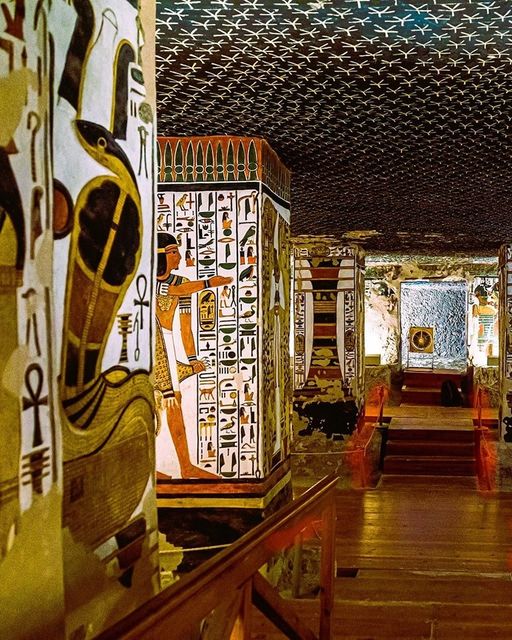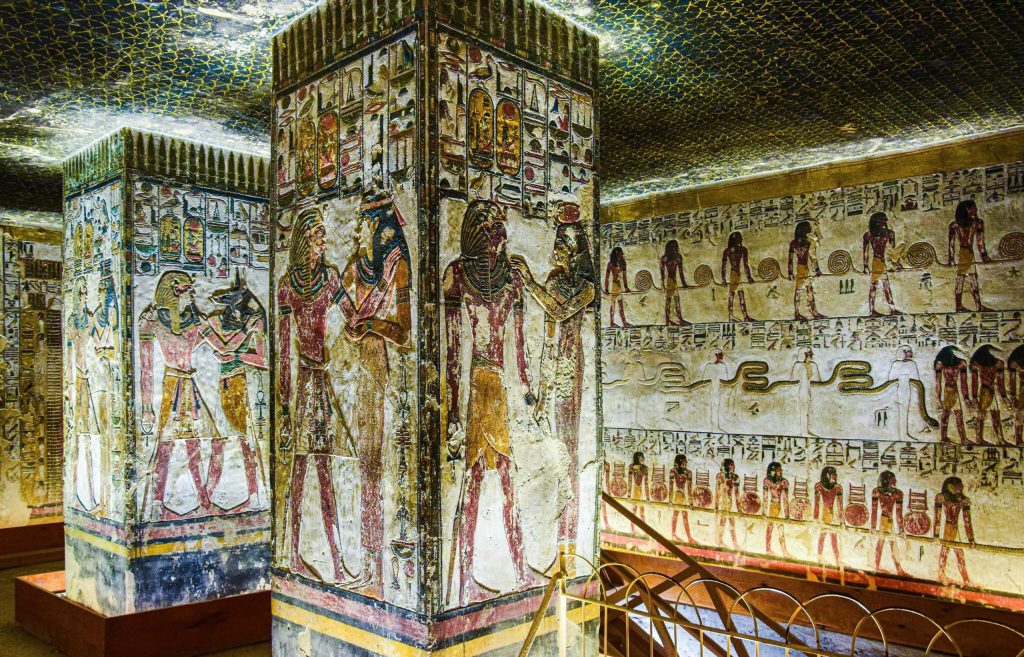Nefertari, whose name elegantly translates to “The Most Beautiful One,” stands among the most extraordinary figures in ancient Egyptian history. As the cherished first wife of Pharaoh Ramses II, one of the most powerful rulers of ancient Egypt, Nefertari earned a prominent place in the annals of history, joining the ranks of legendary queens like Cleopatra, Nefertiti, and Hatshepsut. Although her origins remain shrouded in mystery, the impact of her life and legacy on Egyptian history is both profound and enduring.

Throughout her life, Nefertari demonstrated remarkable influence and wisdom, particularly in matters of diplomacy. While she never ascended to the role of pharaoh herself, she held a position of considerable authority within the royal court. Her diplomatic acumen was especially evident during negotiations with the Hittites, one of Egypt’s most formidable adversaries. Historical records, including preserved correspondence, highlight her pivotal role in fostering peace between these two ancient powers. This correspondence offers a rare glimpse into her involvement in international relations and underscores her status as a skilled and respected diplomat.
Nefertari’s diplomatic contributions are matched only by the artistic and architectural marvels that commemorate her life. Chief among these is her tomb, designated as QV66, located deep within the Valley of the Queens. This magnificent burial chamber is often referred to as “The Sistine Chapel of Ancient Egypt” due to its breathtaking artistic excellence. From the moment of its discovery, archaeologists recognized it as one of the most exceptional and well-preserved tombs of ancient Egypt, a true masterpiece that continues to captivate scholars and visitors alike.
The tomb’s murals offer an extraordinary window into Nefertari’s journey into the afterlife. These vibrant and meticulously preserved paintings depict her being guided by various deities, including Osiris, Anubis, and Hathor, through the complex and perilous underworld. The scenes are richly imbued with passages from the Book of the Dead, an essential collection of texts that ancient Egyptians believed would ensure a safe passage into the afterlife. These artistic renderings reflect not only the religious beliefs of the time but also the deep reverence held for Nefertari by those who commemorated her.
The craftsmanship displayed within the tomb’s interior is unparalleled. Every surface is adorned with detailed paintings that remain remarkably vivid despite the passage of millennia. The walls showcase scenes of Nefertari adorned in intricate clothing and exquisite jewelry, symbolizing her elevated status and the grandeur of royal life in ancient Egypt. The sophistication of these artistic details underscores the skill and dedication of the artisans who created them, offering a vivid testament to the cultural and artistic achievements of the period.

Today, Nefertari’s tomb stands as much more than a burial chamber; it is a living legacy that embodies the artistic and architectural achievements of ancient Egypt at their zenith. The exceptional preservation of the tomb’s murals and artifacts allows modern visitors to experience the awe and wonder that ancient Egyptians must have felt when gazing upon these masterpieces. The tomb’s significance extends beyond its aesthetic beauty, serving as a cultural treasure that continues to draw scholars, historians, and tourists from around the world.
The enduring legacy of Nefertari is reflected in the ongoing fascination with her life and contributions. Her tomb remains a focal point for understanding the interplay of art, culture, and politics in ancient Egypt. Through this magnificent monument, her story endures, offering insights into the values, beliefs, and aspirations of one of history’s greatest civilizations. The tomb of Nefertari not only celebrates her as an individual but also highlights the extraordinary capabilities of ancient Egyptian craftsmen and their dedication to preserving the memory of a beloved queen.

Nefertari’s life and legacy resonate through the ages, inspiring both admiration and curiosity. Her role as a diplomatic figure, her artistic patronage, and her representation in the cultural and religious traditions of ancient Egypt all contribute to her remarkable story. The beauty and intricacy of her tomb serve as a lasting testament to her importance, ensuring that her story continues to captivate and inspire future generations. In this way, Nefertari’s influence extends far beyond her lifetime, leaving an indelible mark on the world and securing her place among the most revered figures of ancient history.





